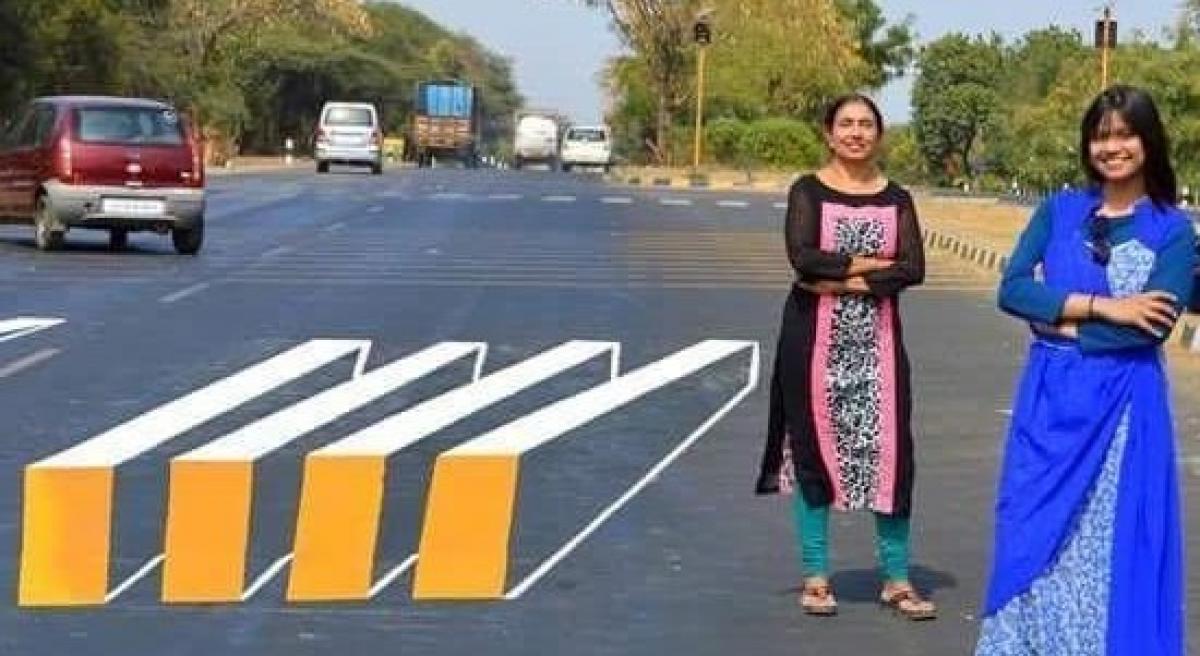Just In

Since January 2016, Indian female artists are painting distorted shapes on the pavement. Applying the anamorphosis effect, where an image is hidden in a distorted perspective, this optical illusion allows to draw both the driver and the pedestrian\'s attentions. In high-risks areas these paintings might make them more vigilant and change their driving patterns.
Since January 2016, Indian female artists are painting distorted shapes on the pavement. Applying the anamorphosis effect, where an image is hidden in a distorted perspective, this optical illusion allows to draw both the driver and the pedestrian's attentions. In high-risks areas these paintings might make them more vigilant and change their driving patterns.
We are trying out 3D paintings used as virtual speed breakers to avoid unnecessary requirements of speed breakers pic.twitter.com/M5r6zkO6uU
— Nitin Gadkari (@nitin_gadkari) 26 avril 2016
Since January 2016, Indian female artists are painting distorted shapes on the pavement. Applying the anamorphosis effect, where an image is hidden in a distorted perspective, this optical illusion allows to draw both the driver and the pedestrian's attentions. In high-risks areas these paintings might make them more vigilant and change their driving patterns.
"We are trying out 3D paintings used as virtual speed breakers to avoid unnecessary requirements of speed breakers," India's transport minister Nitin Gadkari tweeted today.
The optical illusions are supposed to encourage drivers to slow down automatically. Earlier this month, India had ordered the removal of all speed breakers from highways, which are considered to be a safety hazard for high-speed vehicles.
India has the highest number of road accident deaths in the world. According to the World Health Organisation, over 200,00 people are killed by road accidents due to poor implementation of road safety laws. This is considerably higher than its official figures of 141,526 for 2014.
The use of optical illusions as speed breakers was first pioneered in the American city of Philadelphia in 2008, as part of a campaign against speeding motorists. The technique has also been tried out in China to create floating 3D crossings.
In India, cities such as Ahmedabad and Chennai have already experimented with 3D zebra crossings in the last one year. In Ahmedabad for instance, a mother-daughter artist duo has painted 3D crosswalks in the first few months of 2016. The artists say their motto is "to increase the attention of drivers", and that the concept has been successfully tested in accident-prone zones on a highway.
However, critics argue that once drivers know that these speed breakers are visual illusions, they may ignore them. Others also point out that India's decision does not consider the safety of a large number of pedestrians. In the end, the new policy may be just one step towards improving road safety.

© 2024 Hyderabad Media House Limited/The Hans India. All rights reserved. Powered by hocalwire.com







